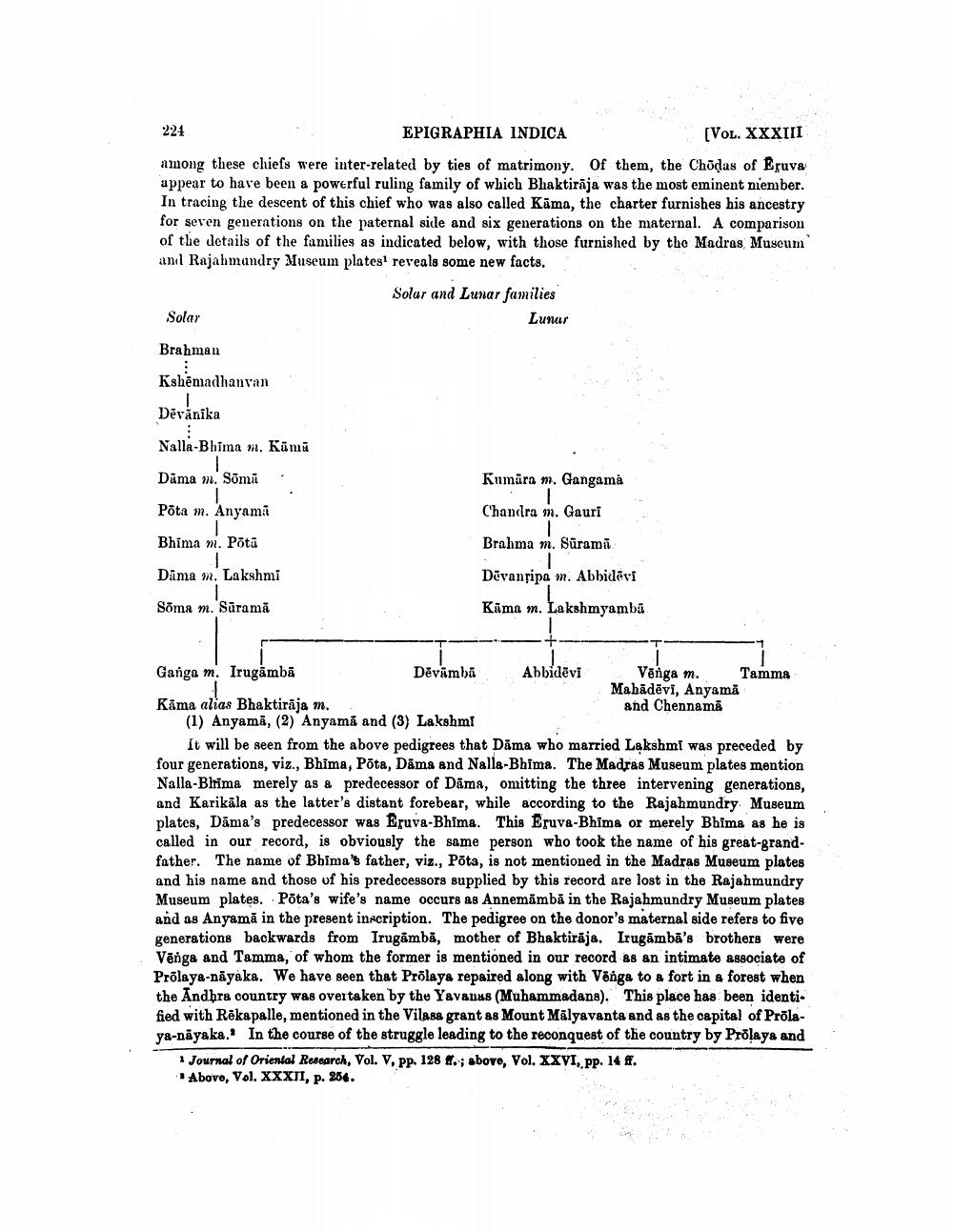________________
224 EPIGRAPHIA INDICA
[Vol. XXXIII among these chiefs were inter-related by ties of matrimony. Of them, the Chödas of Eļuva appear to have been a powerful ruling family of which Bhaktirāja was the most eminent nienber. In tracing the descent of this chief who was also called Kāma, the charter furnishes his ancestry for seven generations on the paternal side and six generations on the maternal. A comparison of the details of the families as indicated below, with those furnished by the Madras Museum anıl Rajahmundry Museum platest reveals some new facts.
Solur and Lunar families Solar
Lunar
Brahman
Kshēmadhanvan
Dēvānika
Nalla-Bhima m. Kūmā
Dama m. Sömā
.
Kumāra m. Gangamå
Chandra m. Gauri
Põta m. Anyama Bhima m. Potā
Dāma m. Lakshmi
Brahma m. Sürama Devanțipa m. Abbidévi Kūma m. Lakshmyambā
Sõma m. Sāramā
--
-
Ganga m. Irugamba
Dēvāmba
Vēnga m. Tamma
Mahädēvi, Anyamā Kama alias Bhaktirāja m.
and Chennamā (1) Anyamă, (2) Anyama and (3) Lakshmi
It will be seen from the above pedigrees that Dama who married Lakshmi was preceded by four generations, viz., Bhima, Pota, Dama and Nalla-Bhima. The Madras Museum plates mention Nalla-Blrima merely as & predecessor of Dama, omitting the three intervening generations, and Karikāla as the latter's distant forebear, while according to the Rajahmundry Museum plates, Dāma's predecessor was Eruva-Bhima. This Eruva-Bhima or merely Bhima as he is called in our record, is obviously the same person who took the name of his great-grandfather. The name of Bhima's father, viz., Pota, is not mentioned in the Madras Museum plates and his name and those of his predecessors supplied by this record are lost in the Rajahmundry Museum plates. Pota's wife's name occurs as Annemimbă in the Rajahmundry Museum plates and as Anyamā in the present inscription. The pedigree on the donor's maternal side refers to five generations backwards from Irugămbă, mother of Bhaktirāja. Irugāmbā's brothers were Vēnga and Tamma, of whom the former is mentioned in our record as an intimate associate of Prõlaya-nāyaka. We have seen that Prolaya repaired along with Vănga to a fort in a forest when the Andhra country was overtaken by the Yavanas (Muhammadans). This place has been identified with Rēkapalle, mentioned in the Vilasa grant as Mount Mālyavanta and as the capital of Prolaya-nayaka. In the course of the struggle leading to the reconquest of the country by Prolays and
1 Journal of Oriental Research, Vol. V. pp. 128 ff.; above, Vol. XXVI, pp. 14 ff. *Above, Vol. XXXII, p. 254.




